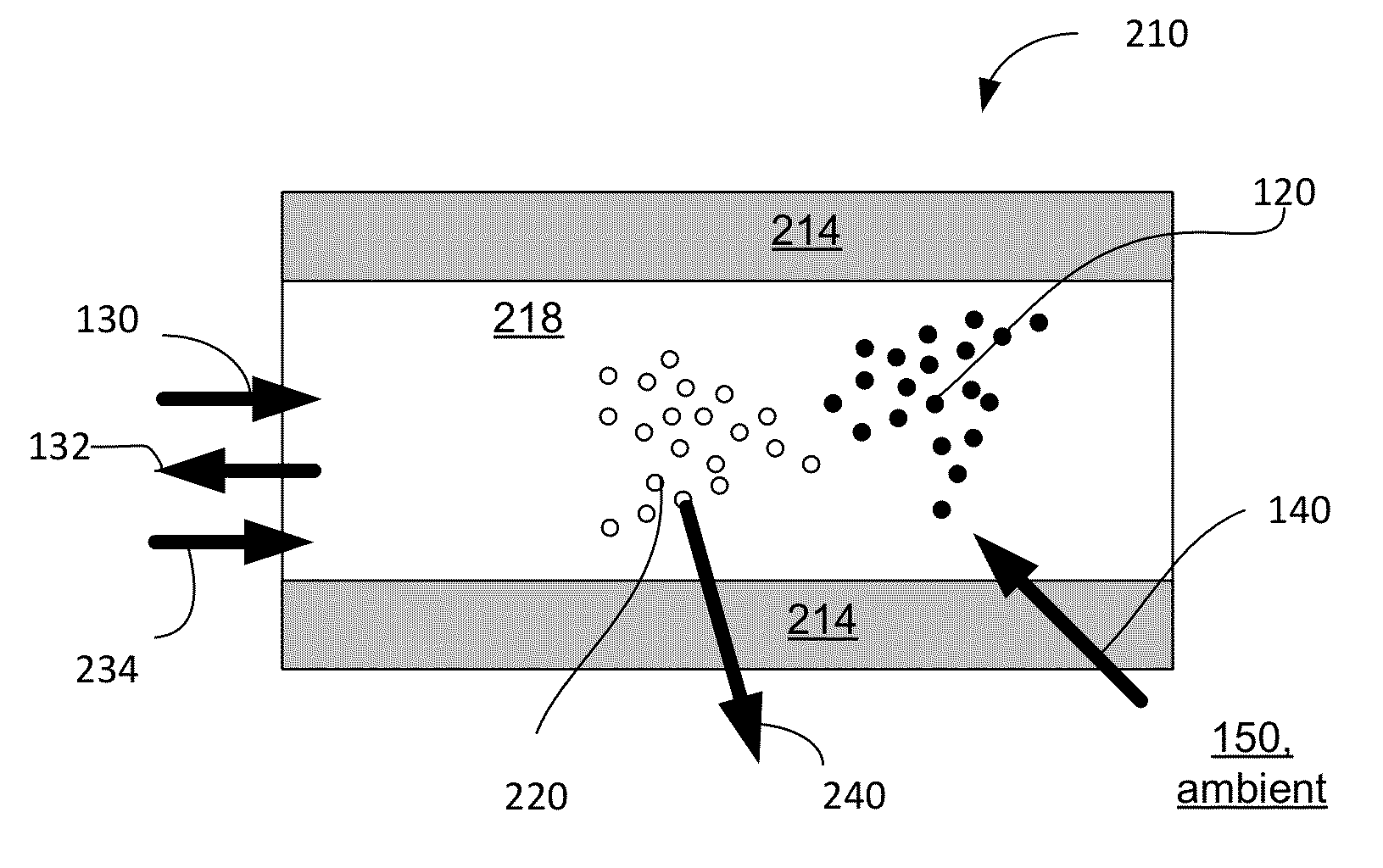Light-guiding hydrogel devices for cell-based sensing and therapy
- Summary
- Abstract
- Description
- Claims
- Application Information
AI Technical Summary
Benefits of technology
Problems solved by technology
Method used
Image
Examples
examples of embodiments
Example 1
[0053]As shown schematically in FIG. 1, an embodiment 100 of the assembly of the invention includes, in part, a light-collecting three-dimensional body 110 containing a polymer hydrogel material that encapsulates sensory receptors or cells 120. The body 110 may be structured in various fashions, for example as a slab waveguide or a thin-film waveguide discussed in U.S. patent application Ser. No. 14 / 239,607; or as a 3D body having a different shape. In a specific case, when the polymer hydrogel body 110 is configured as a lightpipe (for example, a rectangular flexible slab with dimensions on the order of several mm by a millimeter by several tens of millimeters), it may include an optical-lightguide core and / or cladding (as known in the art; not shown in FIG. 1) that facilitate light-guiding within the body. The optical index distribution in such lightguide has a predetermined profile judiciously chosen to facilitate guiding of light 130, 132 for delivery of light to and / or...
example 2
[0059]According to idea of the invention, at least a light source used for excitation of the elements 120 and / or 220 (or, possibly, both such a light source and an optical detector configured to register the optical response of the sensory receptors to the excitation light) may be integrated within the hydrogel body 110, 220. A hydrogel body 110 of the embodiment 500 of FIG. 5, for example (for simplicity shown to encapsulate only the sensory receptors 120) includes a light emitter 510 structured to be powered by an external energy source 514 via a wireless connection 520, for example by induction coupling from the transmitter of the external electronic circuitry 530. In one specific example, a single micro-LED (such as that described by R. Mandal et al. in “Wirelessly Powered and Controlled, Implantable, Multi-channel, Multi-wavelength Optogenetic Stimulator”; 2013 IEEE MTT-S International Microwave Workshop of RF and Wireless Technologies for Biomedical and Healthcare Applications...
example 3
[0060]In one implementation, schematically illustrated in FIG. 6, the hydrogel body 110 is formed inside the biological tissue 650 via injection of a liquid-phase material through a small-diameter injector 654 and in situ gelation following the injection. In one example, such material may include PEG-PLGA-OEG triblock copolymer, designed to be in a liquid phase at temperatures that are lower than the body temperature and initiate gelation at about 37° C. The injector is removable (as shown by a dashed line) and, in practice, is disposed of after the gelation of the body 110 with at least one of the sensory receptors and reflex elements encapsulated in it.
PUM
| Property | Measurement | Unit |
|---|---|---|
| Density | aaaaa | aaaaa |
| Flexibility | aaaaa | aaaaa |
| Molecular weight | aaaaa | aaaaa |
Abstract
Description
Claims
Application Information
 Login to View More
Login to View More - R&D
- Intellectual Property
- Life Sciences
- Materials
- Tech Scout
- Unparalleled Data Quality
- Higher Quality Content
- 60% Fewer Hallucinations
Browse by: Latest US Patents, China's latest patents, Technical Efficacy Thesaurus, Application Domain, Technology Topic, Popular Technical Reports.
© 2025 PatSnap. All rights reserved.Legal|Privacy policy|Modern Slavery Act Transparency Statement|Sitemap|About US| Contact US: help@patsnap.com



